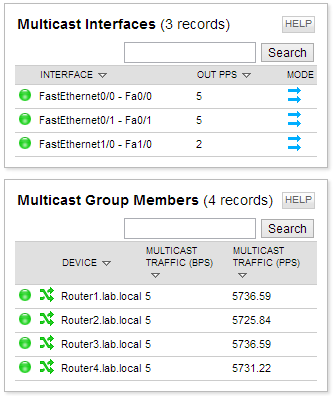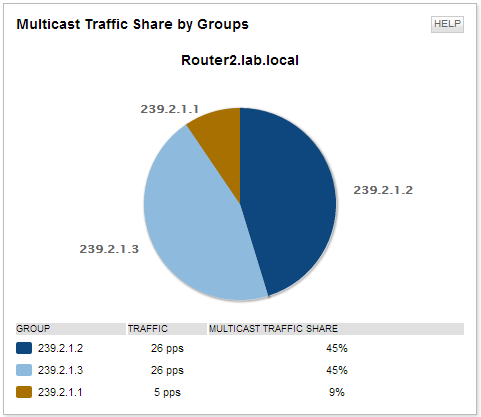What is IP Multicasting?
While traditional IP communication allows a host to send packets to a single host (unicast transmission) or to all hosts (broadcast transmission), IP multicast is new a bandwidth-conserving technology that allows a host to send packets to a subset of all hosts as a group transmission. Multicast transmission reduces traffic by simultaneously delivering a single stream of information to multiple receivers.

Key Benefits
- Considerable bandwidth savings as there’s just a single stream of traffic transmitted
- Elimination of network redundancy
- Reduced load on servers and CPUs
- Functionality to choose individual receivers or group of receivers
Thus, IP multicasting allows you to efficiently distribute video, voice and data to virtually any number of corporate recipients and homes. Multicast is increasingly being deployed in enterprises for services such as multimedia distribution, finance, education and desktop imaging.
Why Monitor Multicast Traffic?
It’s important to monitor multicast traffic because you need to be sure of the availability of the multicast receivers, and whether there’s any packet loss or latency with packet transmission via protocols such as IGMP and PIM. As a network admin, you also need to know what the multicast route path is, and whether the network devices and their interface transmitting the multicast data are having any performance issues that inhibit the multicast data delivery.
What Multicast Metrics You Need to Monitor?
Network Devices by Multicast Traffic
At a high-level this statistic will allow you to be informed of the top consumers of multicast traffic on your network.

Multicast Group Members
To be able to easily isolate issues happening in multicast groups, you need to know the multicast devices and interfaces that are part of a multicast packet transmission, and monitor their availability, health, and performance right alongside multicast data.

Multicast Traffic Metrics at the Device Level
- How a network device shares multicast traffic from various transmissions?
- What is the node utilization over time by multicast traffic?

Multicast Traffic Metrics at the Interface Level
- Current rate of transmitted multicast (pps)
- Current rate of transmitted multicast (pps)
- Current incoming multicast traffic to interface (pps)
- Current outgoing multicast traffic from interface (pps)
Multicast Topology
For any given network device routing multicast traffic, knowing what the upstream and downstream routers are can help get a view of immediate topology. You can get to know what interfaces are used for packet transmission and reception from the topology, whether they are available or not, and what amount of traffic is passing through them, etc.

Troubleshooting multicast related performance issues is a time consuming, manual process requiring knowledge of CLI and advanced scripting. SolarWinds Network Performance Monitor (NPM) gives you the ability to automatically monitor your multicast network and alert you when performance issues arise allowing you to reduce your time to resolution. SolarWinds NPM combines views of real-time multicast information alongside device information so you can drill down and see route details of multicast nodes and monitor routers, switches and end-points that receive and forward multicast packets.
Learn More
Read this white paper to further understand how to monitor IP multicast traffic.
